Customs clearance in UAE
If you are looking for a customs broker and customs clearance company in Dubai (UAE) for your air or sea shipment, you can contact the DXBFLY team



We are the best customs clearance agent in UAE
As the global marketplace continues to expand, businesses are increasingly seeking efficient and reliable customs clearance services to ensure their imports and exports pass through borders smoothly. At DXBFLY Shipping Company, we pride ourselves on being the best customs clearance agent in the UAE. Based in Dubai, our team of experienced professionals is committed to delivering unparalleled service to our clients. In this article, we’ll highlight some of the key reasons why DXBFLY stands out as the top choice for businesses seeking customs clearance services in the UAE.
- Expertise and Knowledge
At DXBFLY, our team of skilled customs agents has a deep understanding of the UAE’s customs regulations, procedures, and requirements. With years of experience in the industry, we can guide our clients through the customs clearance process with minimal delays and complications. Our expertise extends to all aspects of customs clearance, including documentation, tariff classification, duty calculation, and compliance.
- Comprehensive Services
DXBFLY offers a wide range of customs clearance services tailored to suit the unique needs of each client. We handle everything from standard import and export clearance to more specialized services like temporary importation, duty exemptions, and clearance of restricted or prohibited goods. Whether you’re a small business or a large multinational corporation, we have the resources and capabilities to cater to your customs clearance requirements.
- Strong Relationships with Authorities
Our long-standing relationships with UAE customs authorities enable us to expedite the clearance process and resolve any issues quickly and efficiently. Our strong rapport with government agencies, such as the Federal Customs Authority, ensures that we are always up-to-date with the latest regulatory changes and can provide our clients with accurate advice and guidance.
- Advanced Technology
At DXBFLY, we utilize cutting-edge technology to streamline the customs clearance process and enhance our service offerings. Our advanced software systems enable us to communicate efficiently with customs authorities, ensuring accurate and timely submission of documents. We also employ innovative digital solutions for tracking shipments, providing our clients with real-time updates and greater visibility throughout the customs clearance process.
- Personalized Customer Service
We understand that every business has unique needs and challenges when it comes to customs clearance. That’s why we offer personalized customer service to ensure a seamless experience for our clients. Our dedicated account managers work closely with clients to understand their specific requirements, offering tailored solutions and proactive support throughout the customs clearance process.
- Authorized Economic Operator (AEO) Status
As an AEO-certified company, DXBFLY demonstrates our commitment to compliance, security, and efficiency in the international supply chain. This prestigious certification offers our clients several benefits, including expedited customs clearance, reduced inspections, and priority processing.
- Competitive Pricing
At DXBFLY, we believe in providing high-quality customs clearance services at competitive prices. Our transparent pricing structure ensures that clients receive exceptional value for their investment, without any hidden costs or surprises.
DXBFLY Shipping Company stands out as the best customs clearance agent in the UAE, offering a comprehensive range of services, expert knowledge, and personalized customer support. With our commitment to excellence and a proven track record of success, we are the ideal partner for businesses seeking efficient, reliable, and cost-effective customs clearance solutions in
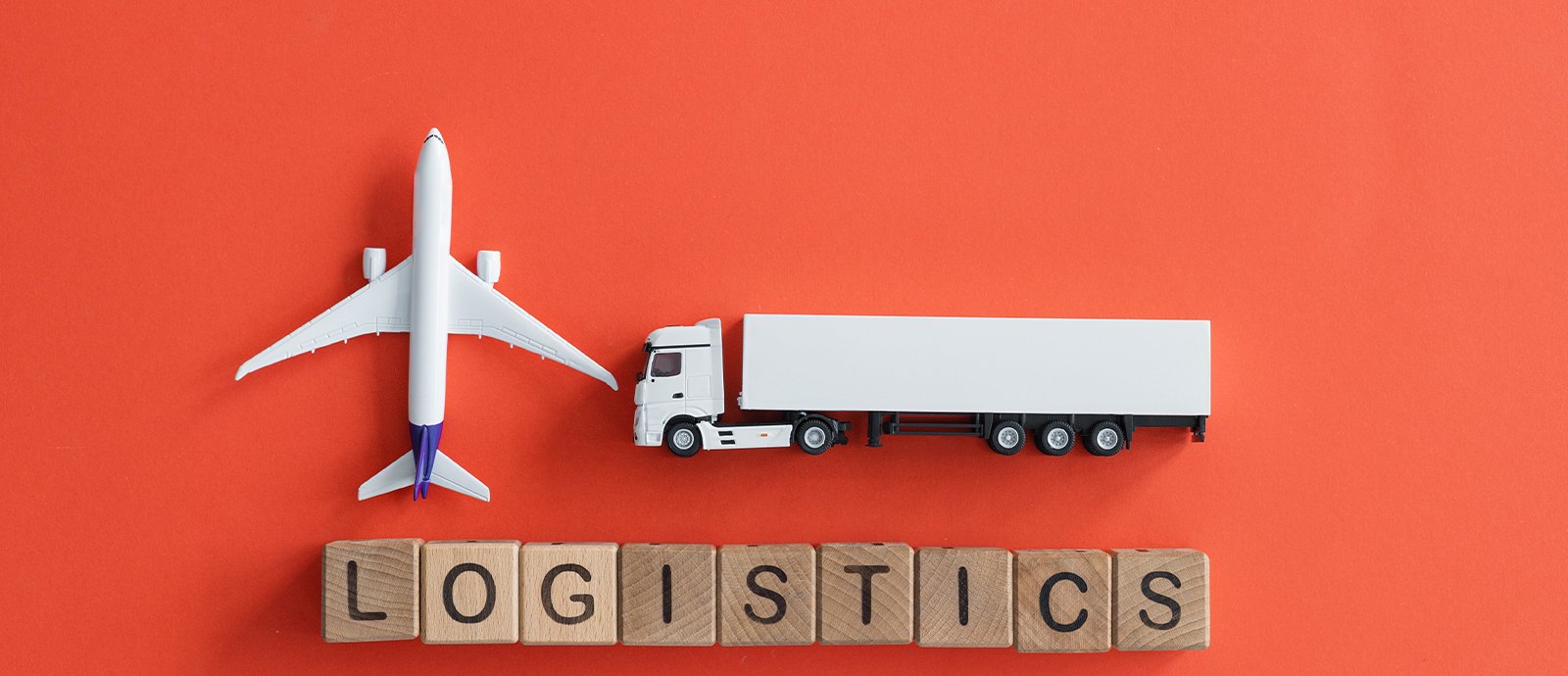
Overview of the customs clearance process in the UAE
At DXBFLY Shipping Company and Customs Broker, we understand the complexities of the customs clearance process in the UAE and are dedicated to helping our clients navigate it with ease.
To provide a better understanding of this process, here is an overview of the key steps and procedures involved in customs clearance in the UAE:
Preparation of Documentation
The first step in the customs clearance process is preparing the necessary documents, such as the commercial invoice, packing list, certificate of origin, and bill of lading or airway bill. Our team at DXBFLY works closely with clients to ensure all documents are accurate and compliant with UAE customs regulations.
Submission of Declaration
Once the required documents are prepared, we submit a customs declaration electronically through the UAE’s e-Clearance system. This declaration contains essential information about the shipment, such as the Harmonized System (HS) code, the value of goods, and the applicable customs duties and taxes.
Payment of Customs Duties and Taxes
After the customs declaration has been submitted, we calculate and pay the applicable customs duties and taxes on behalf of our clients. The UAE follows a harmonized tariff system, with most imported goods subject to a 5% customs duty, although some items may be exempt or subject to different rates.
Customs Inspection
UAE customs authorities may select shipments for inspection to verify the accuracy of the declaration and ensure compliance with regulations. As an experienced customs broker in Dubai, DXBFLY leverages our strong relationships with customs authorities to facilitate timely inspections and minimize potential delays.
Release of Goods
Once the customs duties and taxes have been paid and any inspections are completed, the shipment is cleared for release. Our team at DXBFLY coordinates with the relevant parties, such as freight forwarders and warehouse operators, to ensure the prompt release and delivery of the goods to their final destination.
Record Keeping
UAE customs regulations mandate that importers and exporters maintain records of their transactions for a specific period, usually five years. At DXBFLY, we assist our clients in maintaining accurate and organized records to ensure compliance with these regulations and to simplify future customs clearance processes.
Post-Clearance Support
Our commitment to our clients doesn’t end with the release of their goods. We provide ongoing support and guidance on any post-clearance matters, such as duty refunds, appeals, or amendments to customs declarations. We also keep our clients informed of any regulatory updates that may affect their future shipments.
At DXBFLY Shipping Company and Customs Broker, we strive to provide our clients with a seamless and hassle-free customs clearance experience. Our team of experts, advanced technology, and strong relationships with customs authorities in the UAE ensure that we can deliver efficient and reliable services tailored to our clients’ unique needs. Trust DXBFLY to navigate the customs clearance process in the UAE on your behalf, allowing you to focus on growing your business.
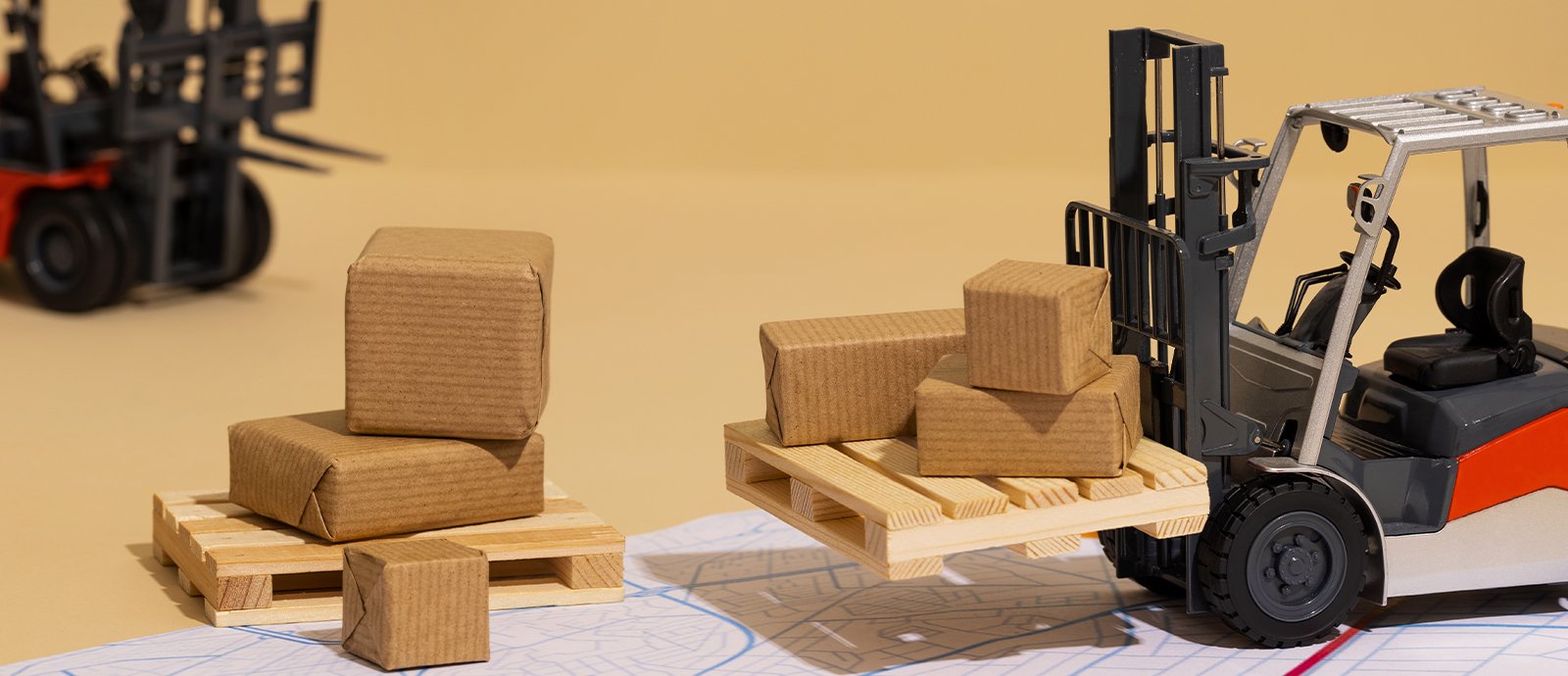
The role of customs brokers in UAE
Customs brokers play a critical role in facilitating international trade by ensuring the smooth clearance of goods through customs authorities. In the UAE, customs brokers are responsible for the following tasks:
Accurate documentation: Customs brokers help importers and exporters prepare and submit all the necessary documents required by UAE customs authorities. This includes commercial invoices, packing lists, certificates of origin, and other relevant permits.
Compliance with regulations: Customs brokers ensure that clients comply with the UAE’s customs laws and regulations. They stay up-to-date with the latest import and export rules, as well as changes in duty rates and taxes.
Calculation of customs duties and taxes: Customs brokers calculate the applicable customs duties and taxes based on the Harmonized System (HS) codes of the imported or exported goods. They help clients understand the various fees and charges involved in the customs clearance process.
Liaising with customs authorities: Customs brokers act as intermediaries between clients and customs authorities. They communicate with customs officials on behalf of their clients to expedite the clearance process and resolve any issues that may arise.
Navigating Free Trade Zones: Customs brokers help clients take advantage of the UAE’s numerous Free Trade Zones (FTZs) by guiding them through the specific customs procedures and regulations applicable to these areas.
Advisory services: Customs brokers offer advice on matters related to customs clearance, including duty exemptions and concessions, temporary importation procedures, and compliance with regional trade agreements.
At DXBFLY Shipping Company, we pride ourselves on our team of experienced customs brokers who are well-versed in UAE customs regulations and procedures. We provide comprehensive customs clearance services to ensure the efficient and timely movement of your goods, while ensuring full compliance with all relevant laws and regulations.
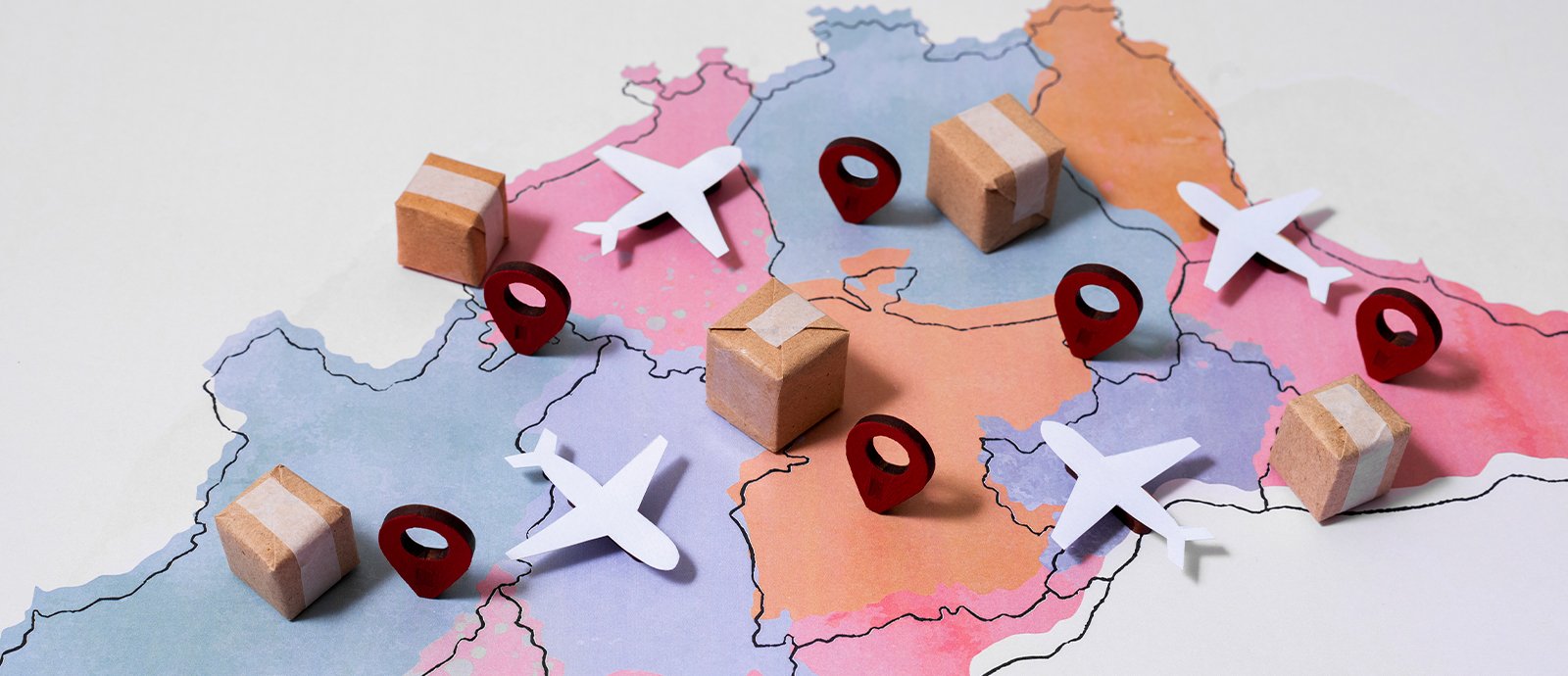
The importance of accurate documentation for customs clearance
In DXBFLY we like to emphasize the importance of accurate documentation for customs clearance in the UAE for both import and export processes.
Accurate documentation is crucial for several reasons:
Compliance with regulations: Submitting complete and accurate documents is essential to comply with UAE customs laws and regulations. Inaccurate or incomplete documentation can lead to delays, penalties, or even the seizure of goods.
Efficient customs clearance: Proper documentation helps expedite the customs clearance process, ensuring your goods reach their destination on time. Customs officials can quickly verify the information provided and release the shipment without any unnecessary delays.
Duty and tax calculation: Accurate documentation, such as commercial invoices, packing lists, and certificates of origin, allows customs brokers to correctly determine the Harmonized System (HS) codes for the imported or exported goods. This ensures that the appropriate customs duties and taxes are calculated and paid.
Risk mitigation: Providing accurate documentation minimizes the risk of non-compliance, potential fines, and legal issues that may arise due to incorrect or misleading information.
Facilitating international trade: Accurate documentation contributes to the smooth flow of goods between countries and promotes a healthy trade environment. It helps avoid trade disputes and fosters trust among trading partners.
At DXBFLY Shipping Company, we understand the importance of accurate documentation and its impact on the customs clearance process. Our experienced customs brokers work closely with our clients to ensure that all required documents are prepared and submitted correctly. We stay up-to-date with the latest import and export regulations, and we are dedicated to providing efficient and compliant customs clearance services for your shipments.

Types of customs duties and taxes in the UAE for Import & Export
we would like to advise you on the different types of customs duties and taxes applicable in the UAE for import and export processes. Understanding these charges will help you make informed decisions and facilitate smooth trade transactions.
Customs Duties
Customs duties are levied on imported goods entering the UAE. The duty rates typically range from 0% to 5% of the product’s CIF (Cost, Insurance, and Freight) value. However, some goods like alcohol and tobacco products may have higher duty rates. It’s important to note that certain goods, such as those imported into the UAE’s Free Trade Zones, may be exempt from customs duties.
Value Added Tax (VAT)
The UAE introduced a 5% VAT on goods and services in 2018. VAT is applicable to most goods imported into the UAE, with a few exceptions such as basic food items, healthcare services, and educational services. Importers are required to pay VAT on the value of the imported goods, including customs duties.
Excise Tax
The UAE imposes excise tax on specific goods considered harmful to human health or the environment. This tax is applicable to products like tobacco, energy drinks, and carbonated drinks. The excise tax rates vary depending on the product and can range from 50% to 100% of the retail price.
Export Duties
Generally, there are no export duties in the UAE, which encourages businesses to engage in international trade. However, some restrictions and regulations may apply depending on the type of goods being exported.
At DXBFLY Shipping Company, we are committed to helping our customers understand the various duties and taxes applicable to their shipments. Our experienced customs brokers will guide you through the customs clearance process, ensuring that your goods are in full compliance with UAE regulations. We will also help you calculate the correct duties and taxes for your shipments, making the import and export process as seamless as possible. Please feel free to reach out to us for any further assistance or guidance related to your customs clearance needs.

How to calculate customs duty in the UAE for Import ( By Example )
Calculating customs duty in the UAE for imported goods involves several steps. Here’s a simple outline of the process:
Determine the HS Code
Check the applicable duty rate
Calculate the CIF value
Calculate the customs duty
Please note that other taxes or fees, such as Value Added Tax (VAT), may also apply to your imported goods. It is essential to consult with a customs broker or a logistics provider like DXBFLY Shipping Company to ensure that you are aware of all the applicable charges and comply with UAE customs regulations.
Let’s say you are importing a shipment of smartphones into the UAE. Here’s an example of how to calculate customs duty for this specific product:
- Determine the HS Code: First, you need to find the HS code for smartphones. In this case, the HS code is 8517.12.
- Check the applicable duty rate: Referring to the UAE’s customs tariff database, the duty rate for smartphones (HS code 8517.12) is 5%.
- Calculate the CIF value: Suppose the cost of the smartphones is USD 20,000. The insurance fee for the shipment is USD 300, and the freight charges to the destination port in the UAE are USD 700. To calculate the CIF value, add these three components:
CIF value = Cost of goods + Insurance fee + Freight charges
CIF value = USD 20,000 + USD 300 + USD 700
CIF value = USD 21,000
- Calculate the customs duty: Now, apply the duty rate to the CIF value:
Customs duty = CIF value x Duty rate
Customs duty = USD 21,000 x 0.05 (5%)
Customs duty = USD 1,050
In this example, the customs duty payable for the imported shipment of smartphones would be USD 1,050. Remember that this calculation does not include other taxes or fees, such as Value Added Tax (VAT), which may also apply to your imported goods. Always consult with a customs broker or a logistics provider like DXBFLY Shipping Company to ensure you are aware of all the applicable charges and comply with UAE customs regulations

How to calculate customs duty in the UAE for Export
In the UAE, export goods generally do not attract customs duties. The UAE encourages international trade by not imposing export duties on most products. However, certain restrictions and regulations may apply depending on the type of goods being exported and the destination country’s import regulations.
When exporting goods from the UAE, it is essential to comply with the destination country’s customs regulations, as well as any specific documentation and certification requirements. Customs duties and taxes on exported goods, if applicable, will be levied by the importing country, and these charges will depend on their specific customs laws and regulations.
To determine any potential customs duties and taxes for your exported goods in the destination country, you need to:
- Identify the Harmonized System (HS) code of the exported product, as this code will be used to determine the applicable duty rate and taxes in the importing country.
- Consult the importing country’s customs tariff database or work with a customs broker or logistics provider familiar with that country’s regulations to find the applicable duty rate and taxes for the product.
- Calculate the customs duty and taxes based on the importing country’s specific regulations, which may involve using the product’s CIF value or other valuation methods.
Please note that it is crucial to work with a reliable customs broker or logistics provider like DXBFLY Shipping Company to ensure you are aware of all the applicable charges and comply with the importing country’s customs regulations when exporting goods from the UAE.
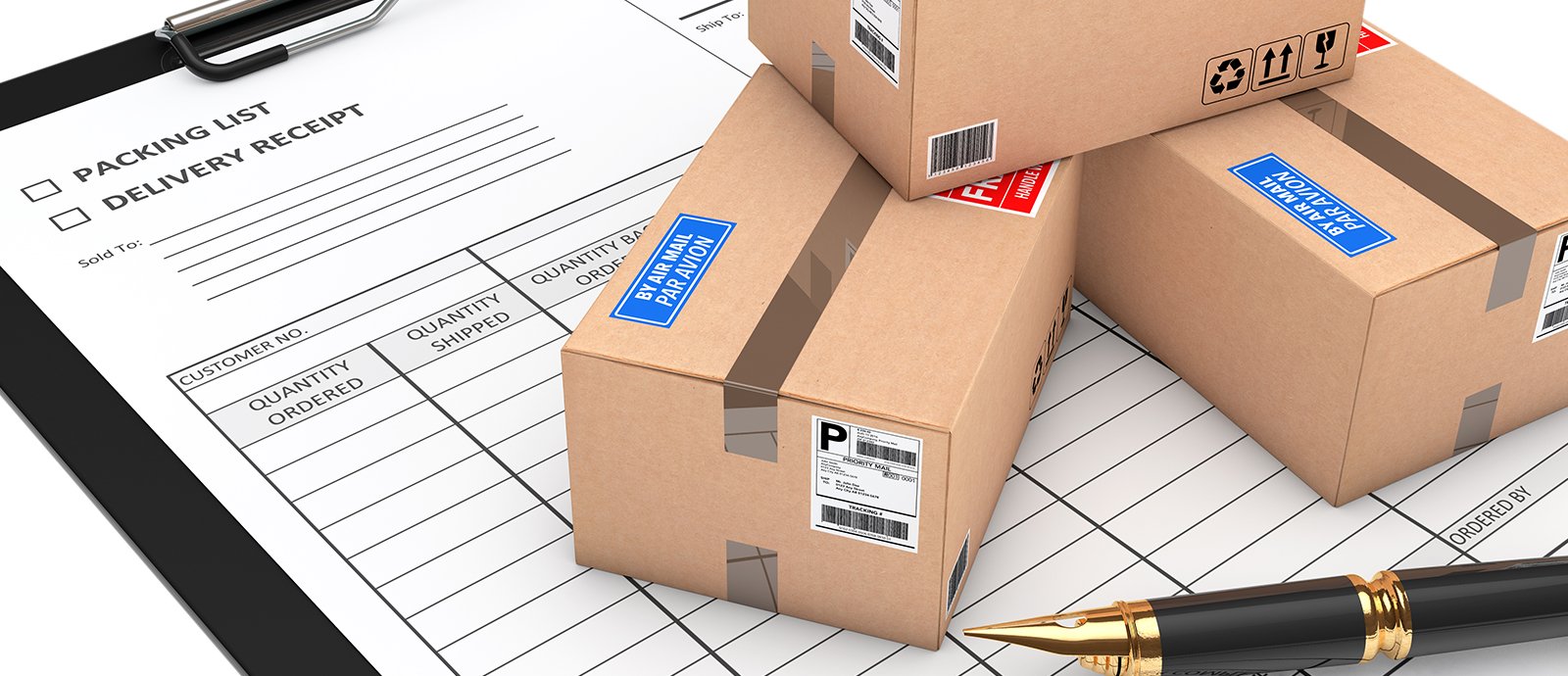
The role of the Federal Customs Authority in UAE
The Federal Customs Authority (FCA) plays a vital role in overseeing and regulating customs activities in the UAE. It is responsible for developing and implementing customs policies, procedures, and standards at the federal level, in coordination with local customs departments in each emirate. The FCA aims to facilitate international trade while ensuring compliance with the UAE’s customs regulations and safeguarding its borders. Some of the key roles and responsibilities of the Federal Customs Authority include:
Policy formulation
The FCA is responsible for developing and implementing customs policies, strategies, and regulations in line with the UAE’s economic objectives and international best practices.
Coordination with local customs departments
The FCA works closely with local customs departments in each emirate to ensure consistent implementation of customs policies and procedures across the UAE.
International cooperation
The FCA represents the UAE in regional and international forums related to customs matters, such as the World Customs Organization (WCO) and the World Trade Organization (WTO). It also participates in the negotiation and implementation of customs-related agreements with other countries.
Combating smuggling and fraud
The FCA plays a critical role in protecting the UAE’s borders by combating smuggling, customs fraud, and other illegal activities. It coordinates with other law enforcement agencies and customs departments to enforce customs regulations and ensure the security of the country.
Facilitating trade
The FCA aims to facilitate trade by streamlining customs procedures, reducing clearance times, and promoting transparency. It implements initiatives such as the Authorized Economic Operator (AEO) program and other advanced customs management systems to enhance the efficiency of customs processes.
Capacity building and training
The FCA is responsible for providing training and capacity-building programs for customs personnel across the UAE. It ensures that customs officers are well-equipped with the necessary knowledge and skills to perform their duties effectively.
Monitoring and evaluation
The FCA monitors and evaluates the performance of local customs departments, ensuring compliance with federal customs regulations and identifying areas for improvement.
In summary, the Federal Customs Authority plays a crucial role in shaping and implementing customs policies and procedures in the UAE. It works to facilitate trade, enforce customs regulations, and protect the country’s borders, ensuring the smooth flow of goods and maintaining the UAE’s position as a global trade hub.

Import and export procedures in the UAE
Below are two tables outlining the import and export procedures in the UAE, along with explanations for each step:
Import Procedures in the UAE:
| Step | Description |
|---|---|
| 1. Obtain Import License | Secure an import license from the relevant authority in your emirate (e.g., the Department of Economic Development). This license allows you to legally import goods into the UAE. |
| 2. Prepare Shipping Documents | Prepare necessary shipping documents such as the invoice, packing list, certificate of origin, and bill of lading or airway bill. These documents will be used for customs clearance. |
| 3. Determine HS Code | Identify the Harmonized System (HS) code for the goods being imported. This code is used to classify products and determine the applicable customs duty rate. |
| 4. Calculate Customs Duties and Taxes | Calculate the customs duties and taxes (e.g., VAT) applicable to the imported goods based on their CIF value and the relevant duty rates. |
| 5. Submit Documents for Customs Clearance | Submit the shipping documents, along with the calculated duties and taxes, to the local customs department for clearance. The customs department will verify the documents and assess the goods. |
| 6. Pay Customs Duties and Taxes | Pay the required customs duties and taxes, as assessed by the customs department. |
| 7. Obtain Customs Release | Once the duties and taxes are paid, and the customs department approves the import, obtain the customs release permit. This permit allows you to take possession of the imported goods. |
| 8. Collect Imported Goods | Collect the goods from the port, airport, or other points of entry, and arrange for transportation to their final destination. |
Export Procedures in the UAE:
| Step | Description |
|---|---|
| 1. Obtain Export License | Secure an export license from the relevant authority in your emirate (e.g., the Department of Economic Development). This license allows you to legally export goods from the UAE. |
| 2. Prepare Shipping Documents | Prepare necessary shipping documents such as the invoice, packing list, certificate of origin, and bill of lading or airway bill. These documents will be used for export customs clearance. |
| 3. Obtain Destination Country’s Import Requirements | Research and obtain the importing country’s specific requirements, such as import permits, licenses, and certifications, to ensure compliance with their regulations. |
| 4. Submit Documents for Export Customs Clearance | Submit the shipping documents to the local customs department for export clearance. The customs department will verify the documents and assess the goods. |
| 5. Obtain Customs Release | Once the customs department approves the export, obtain the customs release permit. This permit allows you to export the goods from the UAE. |
| 6. Arrange Transportation | Arrange for transportation of the goods to the destination country, using a reliable logistics provider or freight forwarder. |
| 7. Comply with Destination Country’s Customs Regulations | Ensure compliance with the destination country’s customs regulations, including payment of any applicable duties and taxes, and provide the required documents for import clearance. |
These tables provide an overview of the import and export procedures in the UAE. It’s essential to work with a reliable customs broker or logistics provider like DXBFLY Shipping Company to ensure smooth customs clearance and compliance with all relevant regulations.

Import and export procedures in the UAE
Here are some tips for successful customs clearance in the UAE:
Obtain the necessary licenses and permits: Ensure that you have obtained all required import or export licenses, permits, and certifications from the relevant authorities in the UAE and the destination country.
Accurate documentation: Prepare accurate and complete shipping documents, including the invoice, packing list, certificate of origin, and bill of lading or airway bill. Any errors or discrepancies in the documents can lead to delays or additional costs.
Determine the correct HS Code: Identify the appropriate Harmonized System (HS) code for your goods to ensure proper classification and calculation of customs duties and taxes.
Comply with regulations: Be aware of and comply with the UAE’s customs regulations and the destination country’s import requirements, including product standards, certifications, and labeling.
Calculate customs duties and taxes accurately: Properly calculate the customs duties and taxes applicable to your goods based on their CIF value and the relevant duty rates to avoid any discrepancies during customs clearance.
Work with a reliable customs broker: Partner with a reputable customs broker or logistics provider like DXBFLY Shipping Company to ensure smooth customs clearance and compliance with all relevant regulations.
Keep up-to-date with regulatory changes: Stay informed about any changes in customs regulations, duty rates, or import/export requirements that may impact your shipments.
Use an Authorized Economic Operator (AEO): If possible, work with an AEO-certified company to benefit from faster customs clearance, reduced inspection rates, and other trade facilitation advantages.
Plan ahead: Allow sufficient time for customs clearance procedures, and be prepared to handle any unexpected issues that may arise during the process.
Maintain clear communication: Ensure clear communication between all parties involved in the shipment, including your suppliers, shipping agents, customs brokers, and freight forwarders.
By following these tips, you can help ensure successful customs clearance in the UAE, minimize delays, and avoid potential issues with your import and export activities.

Understanding the UAE's Harmonized System (HS) Codes ( By Example )
The Harmonized System (HS) is an internationally standardized system of names and numbers used to classify traded products. It was developed by the World Customs Organization (WCO) and is used by more than 200 countries, including the UAE, as a basis for their customs tariffs and for the collection of international trade statistics.
Understanding the UAE’s Harmonized System (HS) Codes is essential for importers and exporters to ensure proper classification of their products, accurate calculation of customs duties and taxes, and smooth customs clearance.
Key points about the UAE’s HS Codes:
Structure: The HS Code consists of six digits, broken down into three levels. The first two digits represent the chapter, the next two digits represent the heading, and the last two digits represent the subheading. This hierarchical structure allows for the classification of thousands of different products.
Product classification: The HS Code system classifies products based on their composition, form, and function. It covers all goods traded internationally, from raw materials to finished products.
Customs tariffs: The UAE uses the HS Codes as the basis for its customs tariff, which determines the customs duty rates applicable to imported goods. By identifying the correct HS Code for a product, importers can accurately calculate the customs duties and taxes they need to pay.
Trade statistics: HS Codes are used by the UAE and other countries to collect and analyze international trade statistics. This data helps governments and businesses monitor trade flows, identify trends, and make informed policy decisions.
Compliance: It is crucial for importers and exporters to correctly classify their products using the appropriate HS Codes. Failure to do so may result in delays, additional costs, or penalties during customs clearance.
Updates: The HS Code system is regularly updated by the WCO to reflect changes in technology, trade patterns, and product development. Importers and exporters should stay informed about any changes to HS Codes that may affect their products.
Let’s take a look at an example of a UAE Harmonized System (HS) Code for a specific product: “Laptops.”
The HS Code for laptops is 847130. To understand this code, let’s break it down into the three levels: chapter, heading, and subheading.
- Chapter (first two digits – 84): This represents the broader category under which the product falls. In this case, “84” corresponds to the chapter for “Nuclear reactors, boilers, machinery, and mechanical appliances; parts thereof.”
- Heading (next two digits – 71): Within the chapter, the heading narrows down the product classification further. The “71” heading refers to “Automatic data processing machines and units thereof; magnetic or optical readers, machines for transcribing data onto data media in coded form and machines for processing such data, not elsewhere specified or included.”
- Subheading (last two digits – 30): The subheading provides an even more specific classification for the product. The “30” subheading represents “Portable automatic data processing machines, weighing not more than 10 kg, consisting of at least a central processing unit, a keyboard, and a display.”
So, the complete HS Code for laptops is 847130, which accurately classifies the product under the chapter for machinery and mechanical appliances, the heading for automatic data processing machines, and the subheading for portable laptops weighing not more than 10 kg.
Let’s take a look at another example of a UAE Harmonized System (HS) Code for a specific product: “Men’s cotton T-shirts.”
The HS Code for men’s cotton T-shirts is 610910. To understand this code, let’s break it down into the three levels: chapter, heading, and subheading.
- Chapter (first two digits – 61): This represents the broader category under which the product falls. In this case, “61” corresponds to the chapter for “Articles of apparel and clothing accessories, knitted or crocheted.”
- Heading (next two digits – 09): Within the chapter, the heading narrows down the product classification further. The “09” heading refers to “T-shirts, singlets, and other vests, knitted or crocheted.”
- Subheading (last two digits – 10): The subheading provides an even more specific classification for the product. The “10” subheading represents “Of cotton.”
So, the complete HS Code for men’s cotton T-shirts is 610910, which accurately classifies the product under the chapter for articles of apparel and clothing accessories, knitted or crocheted, the heading for T-shirts, singlets, and other vests, and the subheading for those made of cotton.
Understanding and using the correct HS Code for your products is crucial for proper classification, accurate calculation of customs duties and taxes, and smooth customs clearance in the UAE. If you need assistance in determining the appropriate HS Code for your products, consider consulting with a customs broker or logistics provider like DXBFLY Shipping Company.

Common reasons for customs clearance delays in the UAE
Here is a table summarizing the common reasons for customs clearance delays in the UAE:
| Reason | Description |
|---|---|
| Incomplete or inaccurate documentation | Errors, inconsistencies, or missing information in shipping documents can cause delays during customs clearance. |
| Incorrect HS Code | Using the wrong Harmonized System (HS) code can lead to improper classification and delays in clearance. |
| Non-compliance with regulations | Failing to comply with UAE customs regulations or destination country requirements can result in delays. |
| Payment issues | Delays in payment of customs duties and taxes can hold up the customs clearance process. |
| Inspections | Random or targeted inspections by customs authorities can lead to delays, especially if discrepancies are found. |
| License and permit issues | Missing or expired licenses, permits, or certifications can cause clearance delays. |
| Restricted or prohibited goods | Importing or exporting restricted or prohibited items without proper authorization can result in delays. |
| Customs valuation disputes | Disagreements over the valuation of goods for customs purposes can cause delays in clearance. |
| Miscommunication | Poor communication between importers, exporters, shipping agents, and customs brokers can lead to delays. |
| Congestion at ports or airports | High volumes of cargo or limited capacity at ports or airports can cause delays in customs clearance. |
Being aware of these common reasons for customs clearance delays in the UAE can help you take steps to prevent them and ensure a smoother, more efficient clearance process.
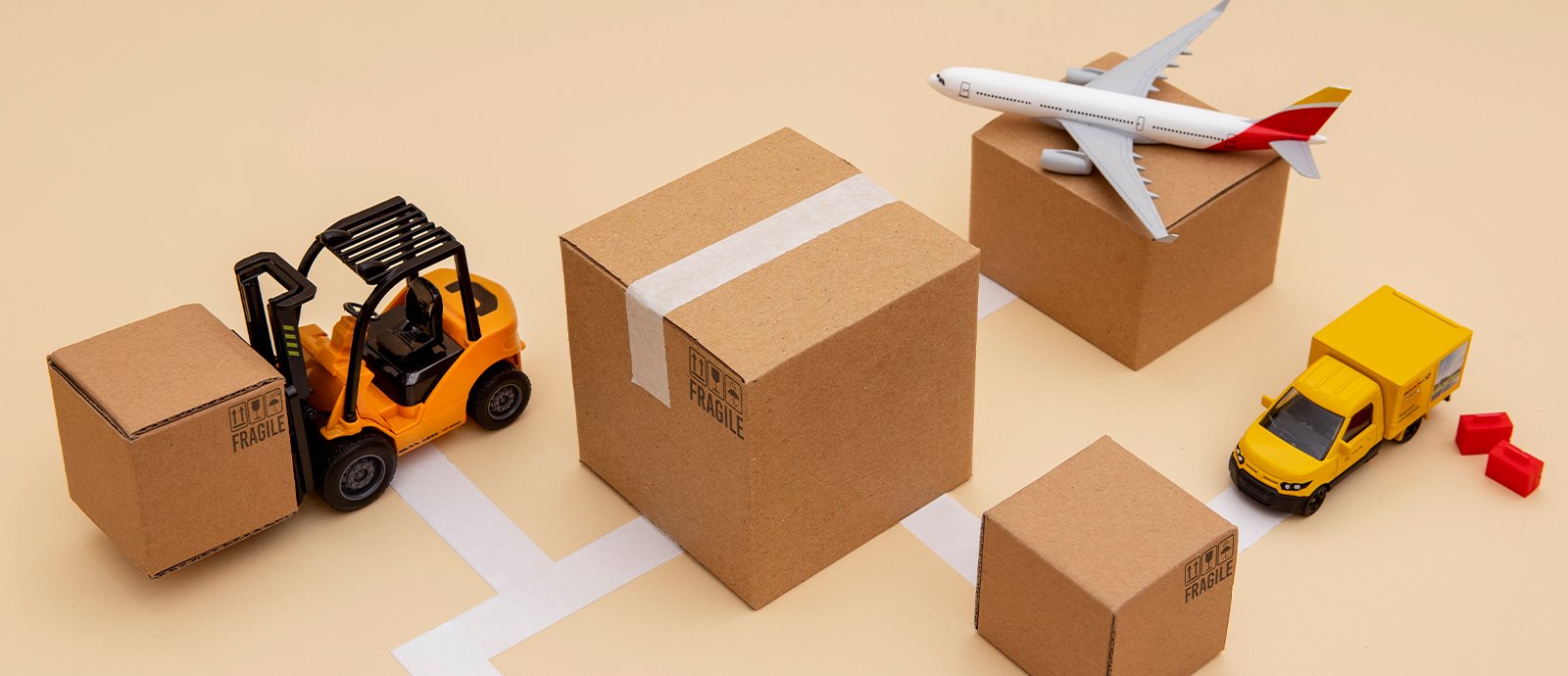
lists of the main customs centers in Dubai
Here’s a table that lists the key customs centers and ports in Dubai, along with their locations and the types of transportation they handle:
| Customs Center | Location | Transportation Handled |
|---|---|---|
| Jebel Ali Port Customs Center | Jebel Ali Free Zone, Dubai, UAE | Sea |
| Port Rashid Customs Center | Port Rashid, Al Mina Road, Bur Dubai, Dubai, UAE | Sea |
| Al Hamriya Port Customs Center | Al Hamriya Port, Dubai, UAE | Sea |
| Dubai Cargo Village Customs Center | Cargo Village, Dubai International Airport, Dubai, UAE | Air |
| Dubai Airport Free Zone (DAFZA) Customs Center | Dubai Airport Free Zone, Dubai, UAE | Air |
| Al Maktoum International Airport Customs Center | Al Maktoum International Airport, Dubai South, Dubai, UAE | Air |
| Hatta Border Customs Center | Hatta, Dubai, UAE (Bordering Oman) | Land |
Please note that this list is not exhaustive, as there may be additional customs centers and offices within the emirate of Dubai.
How to choose a reliable customs broker in the UAE

Here’s a table with some key factors to consider when choosing a reliable customs broker in the UAE:
| Factor | Description |
|---|---|
| Experience | Look for a customs broker with extensive experience in handling customs clearance for various types of goods and industries in the UAE. |
| Licensing and Certification | Ensure the customs broker is licensed and certified by the UAE customs authorities and any relevant industry organizations. |
| Knowledge of Regulations | A reliable customs broker should have a thorough understanding of UAE customs regulations, as well as destination country requirements. |
| Good Communication | Effective communication is essential for a smooth customs clearance process. The broker should be responsive and provide timely updates. |
| Reputation | Check online reviews, testimonials, and references to assess the reputation of the customs broker. |
| Local Presence | A customs broker with a local presence in the UAE, particularly in the emirate where your goods will be cleared, can provide better assistance. |
| Network of Partners | A strong network of partners, such as shipping agents, freight forwarders, and logistics providers, can help facilitate a smooth clearance process. |
| Transparent Pricing | The customs broker should provide clear and transparent pricing without any hidden fees or unexpected charges. |
| Customs Brokerage Services | Ensure the customs broker offers a comprehensive range of customs brokerage services, including documentation, classification, and duty calculation. |
| Industry-Specific Expertise | If you are dealing with specialized goods or industries, choose a customs broker with expertise in those specific areas. |
By considering these factors when selecting a customs broker in the UAE, you can increase the likelihood of a successful and efficient customs clearance process.

Necessary documents for customs clearance process in UAE
Here’s a list of necessary documents typically required for starting the customs clearance process for a shipment in the UAE:
| Document No. | Document Name | Description |
|---|---|---|
| 1. | Commercial Invoice | Provides details of the goods, such as description, value, country of origin, and seller information. |
| 2. | Packing List | Provides information about the shipment’s contents, including weight, dimensions, and packaging of the goods. |
| 3. | Bill of Lading (Sea) / Air Waybill (Air) | Serves as a contract between the carrier and the shipper, providing information about the shipment. |
| 4. | Certificate of Origin | Certifies the country of origin of the goods and may be required for customs clearance or preferential trade agreements. |
| 5. | Import/Export Declaration | Provides customs authorities with details about the shipment, including HS Codes, value, and applicable duties or taxes. |
| 6. | Customs Duty and Tax Receipt | Confirms that the required customs duties and taxes have been paid for the shipment. |
| 7. | Import/Export License or Permit | Required for specific goods, depending on their nature and relevant government regulations. |
| 8. | Health or Sanitary Certificates | Required for certain goods, such as food, beverages, or live animals, to ensure compliance with health and safety regulations. |
| 9. | Inspection or Test Certificates | Required for some goods to ensure compliance with relevant standards or regulations from an accredited laboratory or inspection agency. |
| 10. | Insurance Certificate | Provides proof of insurance coverage for the shipment in case of loss or damage during transportation. |
Please note that the specific documents required for customs clearance in the UAE may vary depending on the nature of the goods, the mode of transportation, and any special regulations or requirements that apply to the shipment. It is always a good idea to consult with a customs broker or logistics provider, like DXBFLY Shipping Company, to ensure that you have all the necessary documentation for a smooth customs clearance process.

customs clearance company in UAE
customs clearance in the UAE is a vital process for the successful import and export of goods. It involves a comprehensive understanding of UAE customs regulations, accurate documentation, and timely communication. By providing the necessary documents, such as the commercial invoice, packing list, bill of lading or air waybill, certificate of origin, and others, businesses can facilitate a smooth customs clearance process and ensure compliance with UAE laws.
A reliable customs broker, like DXBFLY Shipping Company, plays a crucial role in this process by offering expert guidance, industry-specific knowledge, and strong local presence. By partnering with a trusted customs broker, businesses can successfully navigate the complexities of UAE customs clearance, minimize delays, and ultimately promote efficient global trade.
As the UAE continues to develop and diversify its economy, customs clearance services will remain a key component of the country’s international trade framework. Staying informed about customs regulations and best practices, and working with experienced customs brokers, will help businesses to effectively manage their customs clearance processes and contribute to the overall growth of the UAE’s economy.
Frequently asked questions
Customs clearance refers to the process of clearing goods through customs for import or export. It involves submitting the necessary documents, paying any applicable taxes and fees, and complying with any regulations or laws related to the shipment
Customs clearance is important to ensure that goods are legally imported or exported, comply with relevant regulations, and are not held up at the border or subject to penalties.
The documents required for customs clearance in UAE include a commercial invoice, packing list, bill of lading, certificate of origin, and any other relevant permits or licenses
The customs duties and taxes in UAE vary depending on the type of goods being imported, their value, and the country of origin. The UAE uses a value-added tax (VAT) system, which is currently set at 5%.
A customs clearance agent in UAE is responsible for preparing and submitting the necessary documents, paying any applicable taxes and fees, and ensuring that goods are cleared through customs in a timely and efficient manner.
The benefits of using a customs clearance agent in UAE include saving time and money, avoiding potential customs delays or penalties, and ensuring compliance with relevant regulations and laws.
When choosing a customs clearance agent in UAE, look for a company with a good reputation, experience in your industry, and a strong track record of success in customs clearance.
The cost of customs clearance in UAE varies depending on the type and value of goods being imported, the complexity of the clearance process, and the specific services required. It is best to request a quote from a customs clearance agent.
The timeline for customs clearance in UAE depends on various factors, such as the type of goods being imported, the complexity of the clearance process, and any customs inspections that may be required. In general, customs clearance can take anywhere from a few days to several weeks.
If your goods are held up at customs in UAE, you may need to provide additional documentation or pay additional fees or taxes. Your customs clearance agent can advise you on the best course of action
Customs clearance and freight forwarding are related but distinct services. Freight forwarding involves the transportation of goods from one location to another, while customs clearance involves the preparation and submission of documents to clear goods through customs.
It is possible to clear customs yourself in UAE, but it can be a complex and time-consuming process. Using a customs clearance agent can save you time and reduce the risk of errors or penalties.
The common challenges in customs clearance in UAE include changing regulations, language barriers, and customs inspections or delays. A customs clearance agent can help you navigate these challenges.





